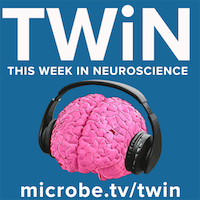TWiN discusses research showing that sciatic nerve activation with electroacupuncture at the sciatic nerve controls systemic inflammation and rescues mice from polymicrobial peritonitis, by inducing vagal activation of aromatic L-amino acid decarboxylase, leading to the production of dopamine in the adrenal medulla.
Tim takes TWiN through two studies on the role of dopamine: that syllables are natural units of spontaneous behavior used by the brain to structure action, and that mesolimbic dopamine release conveys causal associations but not reward prediction errors, thereby challenging the dominant theory of reward learning.
TWiN explains how neurological disease in mice can be repaired by using CRISPR/Cas to knock down levels of a single cell protein, which converts astrocytes to neurons.
Erin and the TWiN team explain how dopamine neurons encode reward probability and uncertainty, and their roles in attention-based learning and risk-taking such as gambling and addiction.





